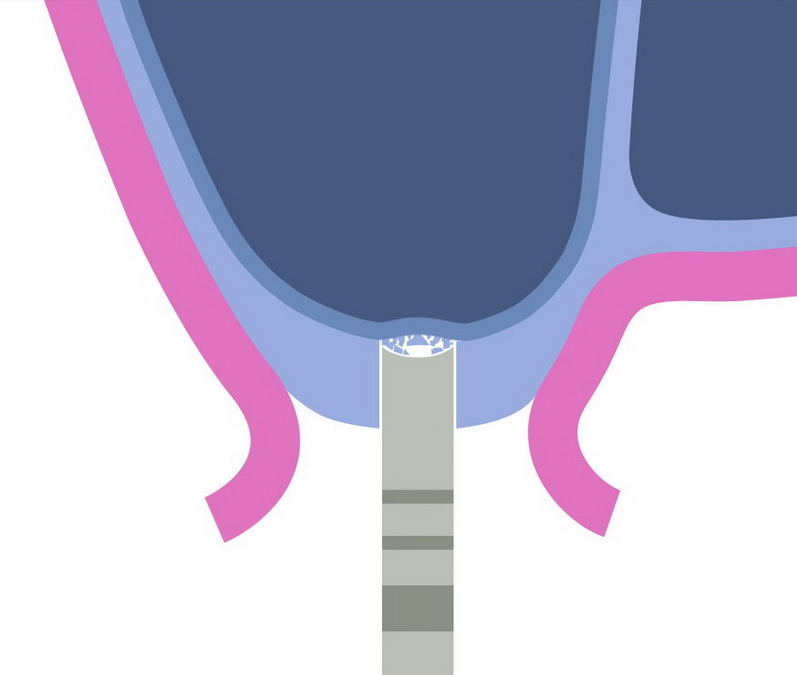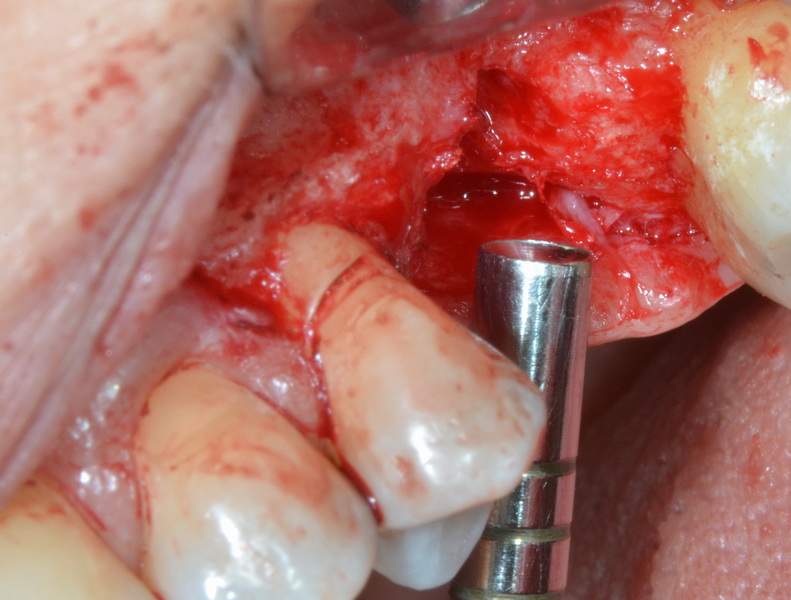Subantral bone height of more than 3 mm
At an estimated subantral bone height of over 3 mm, the access is made with:
- the cylindrical implant drill (ascending to the diameter of the implant)
- sinus floor thinning with diamond drill
- predetermined breaking point trephinations with the finest convex osteotome
- breaking in the sinus floor with a wide convex osteotome
- preparation with a broad convex osteotome
- definitive profile drilling
1. Preparation with the cylindrical implant drill.
Starting with an used implant pilot drill with poor grinding capacity. Close to the sinus floor you can feel increased resistance. The following drillings with the larger drill diameters must not go deeper.

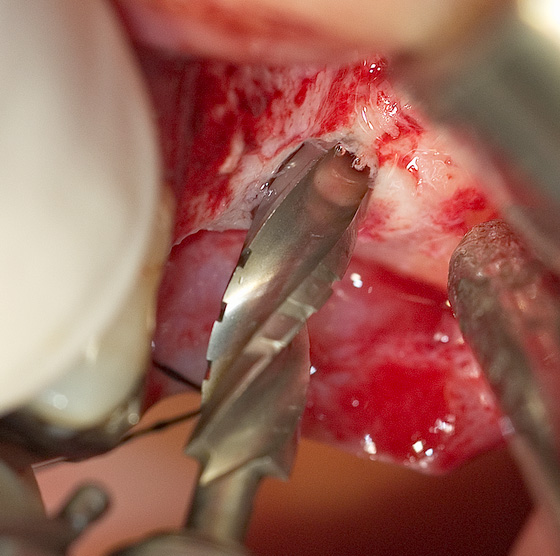
2. Thinning the sinus corticalis
Careful grinding with the diamond drill, as long as bone resistance is felt. Inspect with a mirror: the cortical bone is poorly vascularized, whitish. If thinning is sufficient, you can see the shimmering bluish Meissner's membrane.
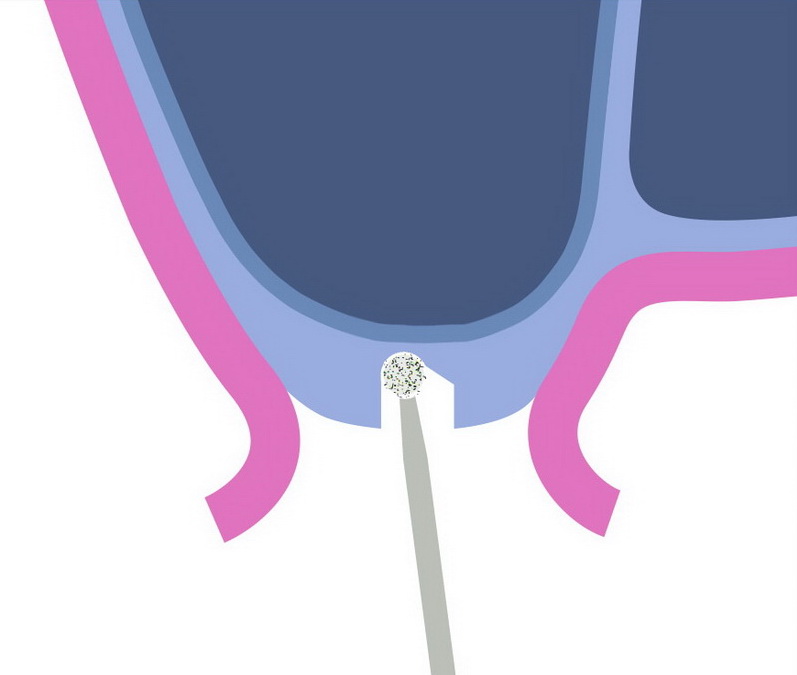
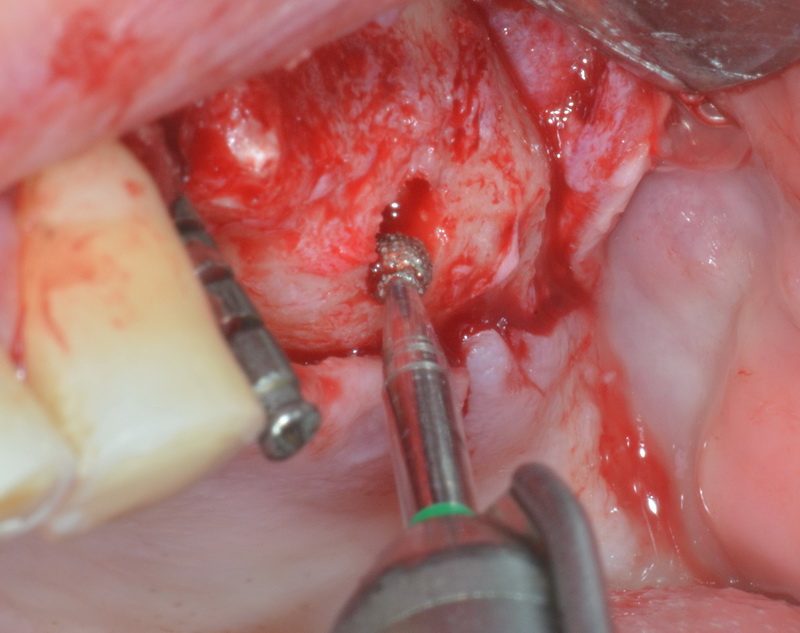
3. Predetermined breaking point trephinations
Using the smallest convex osteotome make three to four trephinations in a diagonal direction as parallel as possible to the sinus floor contour. The hammer blows are very fine, you can feel and hear the perforation. The osteotome penetrates slightly into the maxillary sinus.
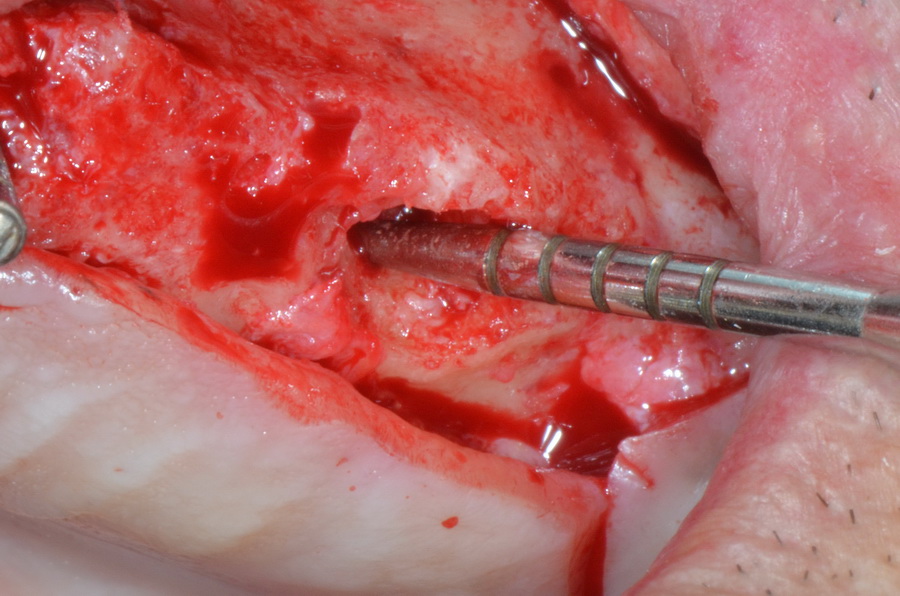
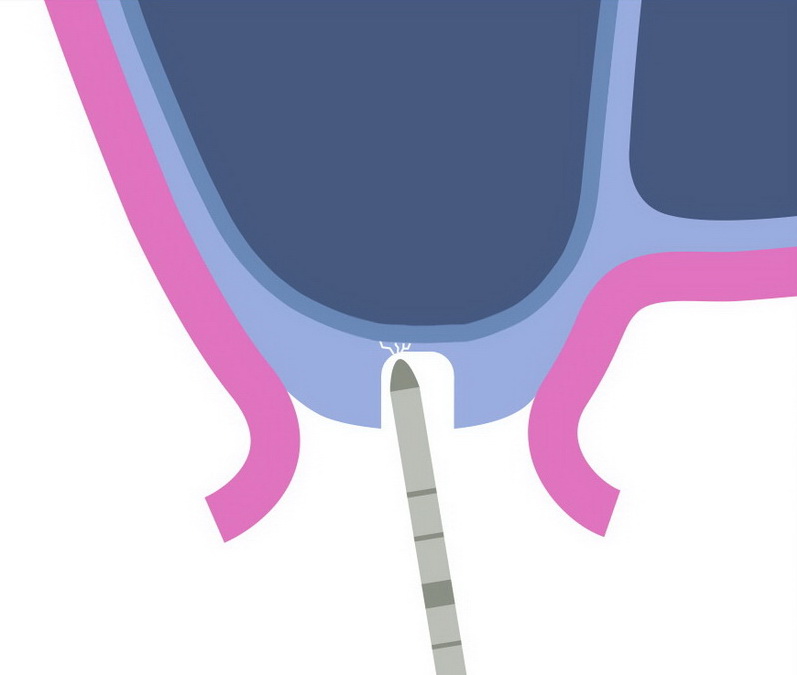
4. Sinus floor trephination with the broad convex osteotome
The prepared channel depth is measured (small osteotome).
The sinus floor is perforated (fine, short hammer blows) using the broad, convex osteotome, 2 mm at most above the measurement that was made
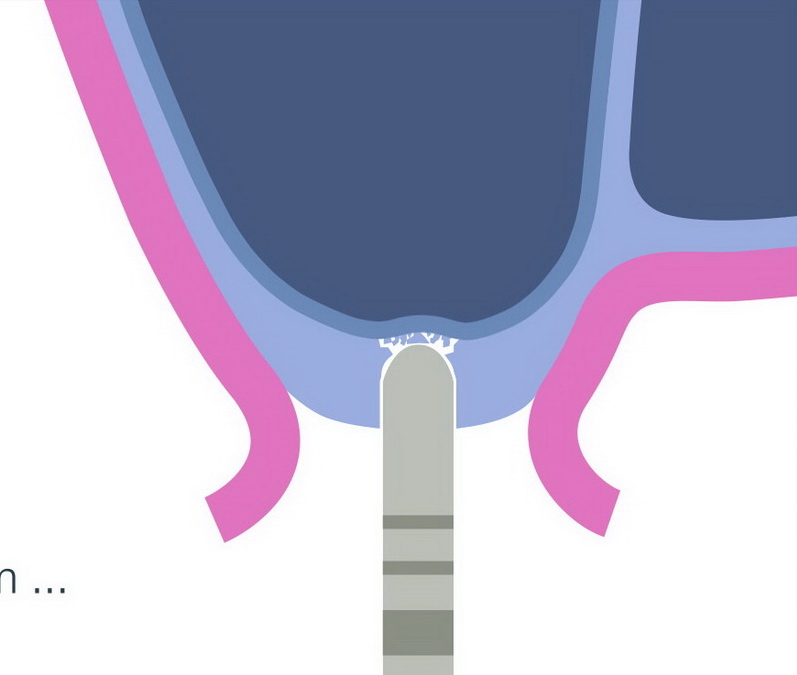
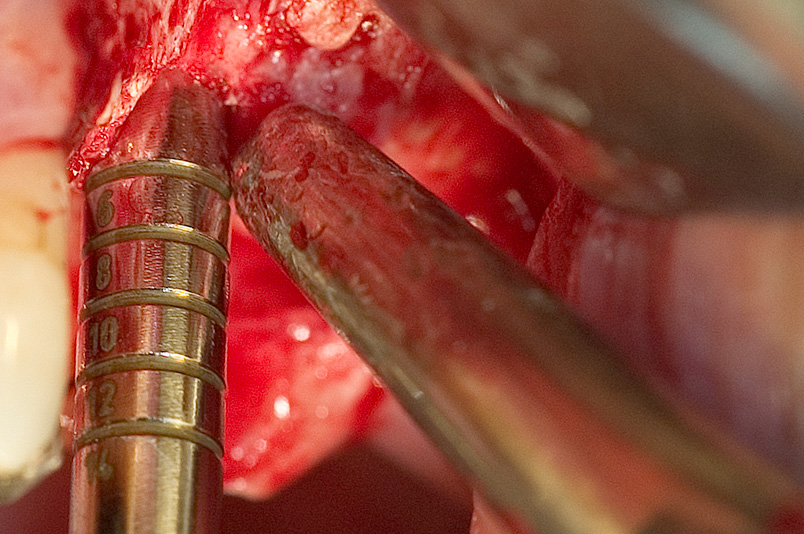
5. Channel enlargement with the broad concave osteotome
The broad, concave osteotome is also introduced with fine, short hammer blows into exactly the same depth as the convex osteotome.
